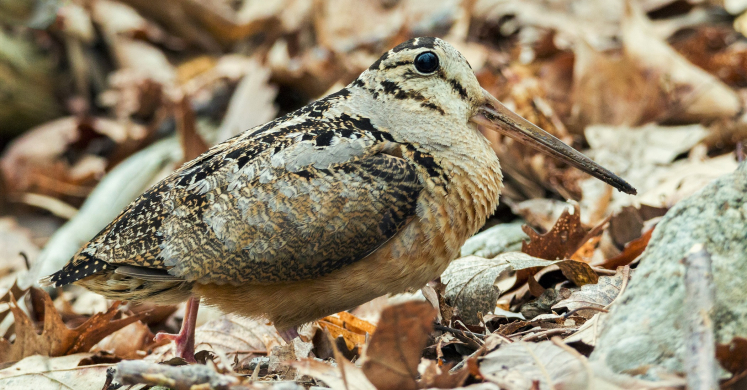Blog

#bioPGH Blog: Timberdoodley-doo!
 A resource of Biophilia: Pittsburgh, #bioPGH is a weekly blog and social media series that aims to encourage both children and adults to reconnect with nature and enjoy what each of our distinctive seasons has to offer.
A resource of Biophilia: Pittsburgh, #bioPGH is a weekly blog and social media series that aims to encourage both children and adults to reconnect with nature and enjoy what each of our distinctive seasons has to offer.
Wait…what was that?
Peent…peent…peent…
My husband and I froze while walking our dogs. We stopped and listened to a unique sound filling the evening air. Most of the songbirds we had heard calling would either be settling in for the night or would possibly be resuming their migratory routes. That buzzy, nasal call, though, caught our attention. We frequented this greenspace — ALT’s Churchill Valley Greenway — often and we had never heard this bird at the location before. That call was unmistakable, though: American woodcocks!
Also called timberdoodles or Labrador twisters, woodcocks (Scolopax minor) are portly little relatives of shorebirds. They have roughly the shape of a plover, the elongated bill of an oyster-catcher and the large probing eye of a snipe. Often found where open forest meets shrubby meadows, woodcocks use their long bills to prod the ground in search of insects and their favorite diet items, earthworms. What they are known for, though, are their excellent moves.
If you’ve ever read Aldo Leopold’s A Sand County Almanac, you may be familiar with his entry for the month of April, “Sky Dance.” This essay focuses on the woodcock’s elaborate courtship displays in the spring. The males pair a twittering song with a high-flying, swirling display to impress females (and unintentionally, nearby bird nerds). To begin these courtship displays, the males will establish a stage for themselves in meadow-like scrubby areas near woods; then after announcing their impending performance with their peent calls around sunset, they take to the skies to impress the females. Check out the infrared video below! The display begins around the 30-second mark:
Besides this dramatic courtship performance during mating season, both male and female woodcocks also display a rocking behavior that rather looks like the birds are…dancing! The reason for this behavior isn’t exactly known, though it has been speculated that perhaps the motion helps woodcocks detect underground food items. Or it’s possible the birds are signaling to would-be predators that they aren’t good diet item themselves. The video below may be synced up with some synth sounds, but that is actually what their rocking behavior looks like. Get your groove on, timberdoodles!
We were excited to see and hear woodcocks both evenings that we visited the Churchill green since the species hasn’t been recorded there. The second night we visited, we even met a fellow birder who had come because he had seen my husband’s eBird post about the woodcocks the night before! While woodcocks aren’t endangered or threatened, it’s always exciting to see wildlife return to an area as a habitat is restored. Allegheny Land Trust has already put in significant work at the property, a former golf course, and Phipps’ ecologist Dr. Shishir Paudel has included the property in his own research on meadows. Seeing exciting new species on site is a sign that our green space is headed in the right direction. It means we are respecting our wild neighbors — and what awesome rewards we see around us when we shift our thinking and recognize the beauty of living in harmony!
Connecting to the Outdoors Tip - Breeding season for American woodcocks last from now until April, meaning now is prime time to see their aerial courtship dance. The Three Rivers Birding Club has a few woodcock walks planned over the next few weeks, or you can check on eBird and iNaturalist to see where they have been found before. Just remember to be quiet and respectful to allow the animals to continue their behaviors - you might get to see some dance magic!
Resources
Images: Cover, National Park Service, public domain; header, Maria Wheeler-Dubas (image of Churchill Valley Greenway)

